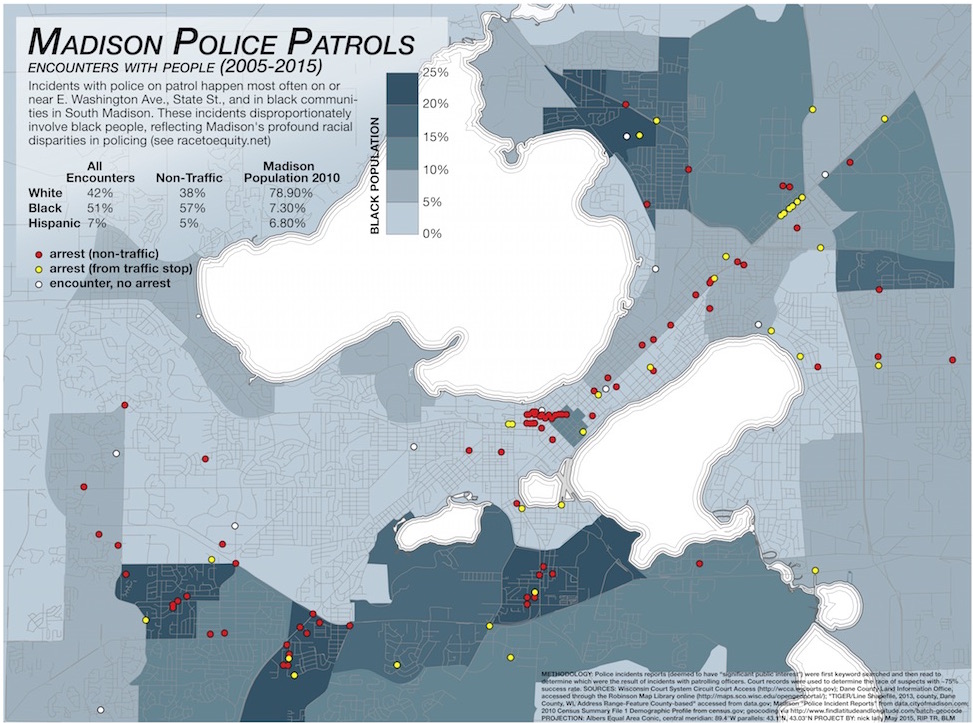Toward a geographical software studies
A series of sessions for the Annual Meeting of the Association of American Geographers in San Francisco, March 29-April 2, 2016
Ryan Burns (Temple University)
Nick Lally (University of Wisconsin–Madison)
A growing body of recent geographic scholarship has focused its attention on software and algorithms. Some of these studies analyze geographic technologies —GIS and the geoweb, for example— as such, while others investigate a myriad of digital technologies that have become ubiquitous within the spaces of everyday life. These software/code objects interact with and modulate the world in complex ways, enact processes that connect humans and nonhumans, and become entangled with social, cultural, political, and economic systems. Moreover, software created to visualize data is used to produce knowledge about urban environments and everyday life, but obscure the processes and contexts which underlie its development. Engaging these topics, geographers have developed concepts like the “automatic production of space” (Thrift and French 2002), “software-sorted geographies” (Graham 2005), and “code/space” (Kitchin and Dodge 2011) to describe how software and space are co-constituted in the contemporary world. Productive research is building on these topics to explore new ways geographies are produced (Rose, Degen, and Melhuish 2014), governed (Amoore 2011), materialized, represented (Woodward et al. 2015), and lived through software (Kinsley 2014).
This session seeks to bring together a range of spatial thinkers who are producing new studies, theories, and methods for understanding and producing software. We welcome submissions that address all facets of software: the context of its production, its internal operational logics, the material work it does in the world, and its spatial distribution of social and political effects. Suggested themes could include:
• Radical, feminist, or postcolonial political theories of software, software production, and/or hacking. What are the liberatory potentials/limits of coding or software and its critiques?
• The political economy of software, code, attentional economies, and the audience as commodity.
• Methodological contributions for the study of software (deconstruction, ethnography, reading code, reverse-engineering, archival research, hacking, writing software, visual studies, understanding processes, online research, etc)
• Software and visual and affective epistemology.
• The materiality of software and the work it does in the world (the production of space, embodiment, urbanization, social sorting, securitization, infrastructure, etc).
Amoore, L. 2011. Data Derivatives: On the Emergence of a Security Risk Calculus for Our Times. Theory, Culture & Society 28 (6):24–43.
Graham, S. D. 2005. Software-sorted geographies. Progress in Human Geography 29 (5):562–580.
Kitchin, R., and M. Dodge. 2011. Code/space: software and everyday life. Cambridge, Mass: MIT Press.
Kinsley, S. 2014. The Matter of “Virtual” Geographies. Progress in Human Geography 38(3): 364-384.
Rose, G., M. Degen, and C. Melhuish. 2014. Networks, interfaces, and computer-generated images: learning from digital visualisations of urban redevelopment projects. Environment and Planning D: Society and Space 32 (3):386–403.
Thrift, N., and S. French. 2002. The automatic production of space. Transactions of the Institute of British Geographers 27 (3):309–335.
Woodward, K., J. P. Jones, L. Vigdor, S. A. Marston, H. Hawkins, and D. P. Dixon. 2015. One Sinister Hurricane: Simondon and Collaborative Visualization. Annals of the Association of American Geographers :1–16.
Please submit a 250 word abstract to Nick (nlally [AT] wisc [DOT] edu) and Ryan (ryan.burns [AT] temple [DOT] edu) by October 9th, 2015.


